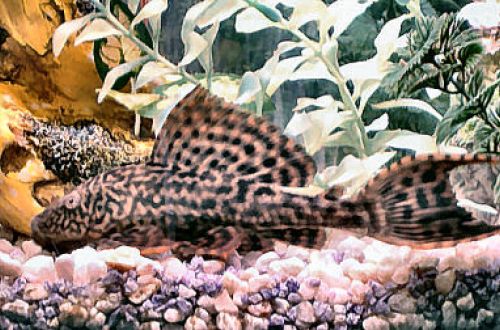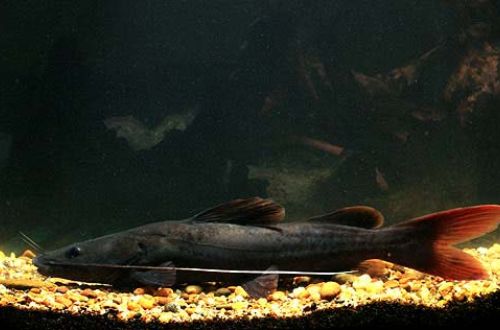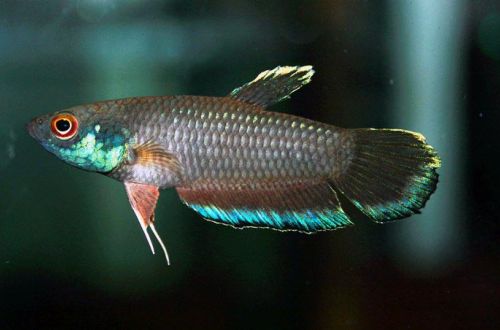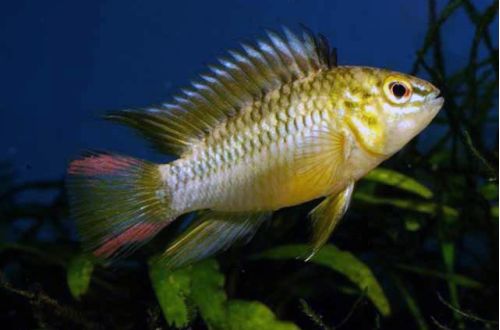
Catfish stuck
Plecostomus or Catfish, scientific name Hypostomus plecostomus, belong to the Loricariidae family. There are several varieties of this species, including albinos, artificially bred for the aquarium trade in a number of Asian countries. The fish is valued for its hardiness and hardiness, and is often used to solve algae problems.

Habitat
Plecostomus (Hypostomus plecostomus) was first described by Carl Linnaeus in 1758. The catfish is distributed in the northern part of South America, inhabiting ponds, fresh and brackish waters of the mouths of rivers flowing into the Pacific and Atlantic oceans. The term Plecostomus means “folded mouth”, applicable to many species whose mouth resembles a sucker.
Description
The catfish has an elongated body covered with bony plates, with the exception of the belly. A high dorsal fin is placed on the back, increasing in size throughout the life of the fish, the caudal fin resembles a crescent. The structure of the mouth resembles a rounded suction cup, the edges of which are smooth, with the help of which the catfish is really able to stick to surfaces, eating, scraping off algae. The common coloration is light brown with dark spots all over the body, which makes the fish appear very dark.
In the wild, the fish grows up to 60 cm, but in an aquarium, the size does not exceed 30-35 cm, life expectancy in captivity reaches 10-15 years. The fish is predominantly nocturnal, hiding in shelters during the daytime.
Food
The basis of the diet is algae, which they eat from the surface of glass, objects and plants, while not causing damage to the latter. Conditions should be provided for the natural growth of algae – good lighting and wooden objects in the design, however, in an aquarium it is impossible to achieve sufficient growth for such a large fish, so daily herbal supplements are required. As feed additives, industrial dry vegetable feeds (plates, granules), vegetables that are fixed at the bottom (lettuce, peas, spinach) are used. Small crustaceans, insect larvae, earthworms can diversify the diet. Feeding should be carried out before the lights are turned off, as the fish are nocturnal. In cases of malnutrition, catfish are able to switch to aquarium plants.
Maintenance and care
The composition of the water is not critical, but its quality must be high. Good filtration and regular water changes (15% at least once a month) will prevent contamination. Large fish require a spacious aquarium of at least 1 liters for adults. In the design, you should use wood – snags, roots, etc. Using a tree solves two problems at once: it provides the fish with the necessary shelters and creates a platform for the growth of algae. The optimal shelter is a combination of wood and plants planted around, the latter should be with a powerful root system, hard leaves.
Social behavior
Herbivorous fish are peaceful in nature, the young catfish is no exception, but with age its behavior changes somewhat. While the fish is young, it gets along well with all peaceful species of fish, an adult becomes territorial, driving away other fish from its shelter. Particularly aggressive attacks occur on representatives of their own species if they were introduced later, or on fish that require similar habitat conditions (eels, other catfish).
Breeding / breeding
Sexual differences are very difficult to notice, only experienced breeders are reliably able to determine the sex of a fish. In the wild, catfish spawn in deep burrows dug in silty river banks; the pair lays about 300 eggs, which are guarded by the male throughout the entire maturation period. No successful breeding experience has been recorded in home aquaria. For sale, fish are bred in large quantities in special hatcheries in Singapore, Hong Kong and Florida.
Diseases
The fish is distinguished by its endurance, in optimal conditions of keeping it is practically not susceptible to disease. If the immune system is weakened (poor water quality, injury, etc.), the body becomes susceptible to the same diseases as other tropical fish. More information about diseases can be found in the section “Diseases of aquarium fish”.





